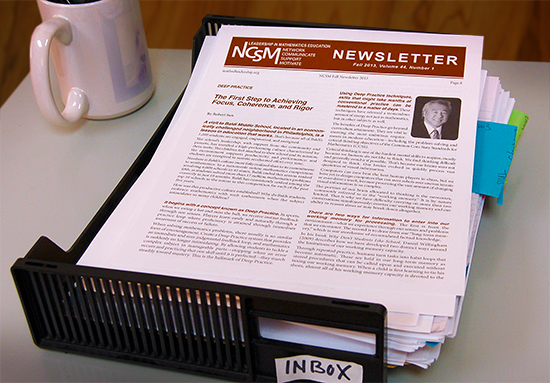EASTON, PA—Robert Sun, First In Math inventor, is often invited to speak and write about issues and philosophies related to mathematics education. An article written by Sun was recently published in the National Council of Supervisors of Mathematics (NCSM) newsletter. It begins by featuring a Philadelphia school’s First In Math success story.

Baldi Middle School ended the First In Math 2012-2013 season ranked #5, as students solved more than 17 million math problems correctly in just ten months. Even though Baldi is located in an economically challenged neighborhood, they sustain a high-performing culture characterized by three traits: the children feel attached to their school and its mission; the environment supports productivity and performance; and students are energized to sustain accelerated effort over time.
The how and why of these accomplishments, according to Sun, begins with a concept known as Deep Practice—a practice loop where proficiency is attained through immediate awareness of success or failure.
This type of learning is evident in sports, music and other pursuits that engage our senses. When solving math problems, however, there usually is no similar form of encouragement. First In Math addresses this challenge by creating a Deep Practice loop to provide immediate, non-judgmental feedback. Students are motivated to tackle a complex subject in manageable parts. They can stop when an error occurs, practice one skill until it is perfected and eventually, achieve mastery. This is the hallmark of Deep Practice.
The benefits of this type of mastery extend to other vital skills—problem solving and critical thinking among them. Successful critical thinking is difficult, because the human brain was not designed to think but evolved to process vast quantities of visual information. Computers can now beat the best human players in chess, but we have yet to design one that can steer robots over uneven terrain or drive a truck—that’s how complex it is to process visual information. Yet for the human brain, it’s a task that is preferable to thinking.
Sun goes on to explain that the portion of our brain allocated to thinking, the neo-cortex, commonly referred to as the “working memory,” is limited. That’s why when we overtax our working memory our ability to reason slows or may break down altogether.
What we experience through our senses enters into our working memory, but we also draw from a storehouse of accumulated knowledge—our long-term memory. If our goal is to enable students to think critically, and thereby approach math with rigor and focus, they must be offered repeated practice to build automaticity and insure that that their long-term memory contains comprehensive factual knowledge related to mathematics.
Sun encourages educators to think of long-term memory as a pantry. When a child’s pantry is sparse, he cannot perform up to expected standards. Stocking the pantry with knowledge is essential if we want children to think critically.
Although children are exposed to vast quantities of information from birth, it is only when they are actively engaged and thinking that this information becomes stored in their long-term memory. Passive styles of teaching can be likened to laying important ingredients on a table and hoping that students will be motivated to collect them and add them to their pantry. However, when a student is not actively engaged, those items never get into the pantry, they pile up and eventually fall off the table’s edge.
Studies confirm that 90 percent of what a child is taught in class is forgotten within 30 days. First In Math avoids this treadmill by providing students with an opportunity to take ownership through active engagement.
Sun concludes by sharing, “Stocking the pantry may not be the most glamorous aspect of math education; but when our kids pantries are full, there’s no limit to what they can accomplish—or to the future they will be inspired to invent.”
Download a PDF of the full NCSM article here.